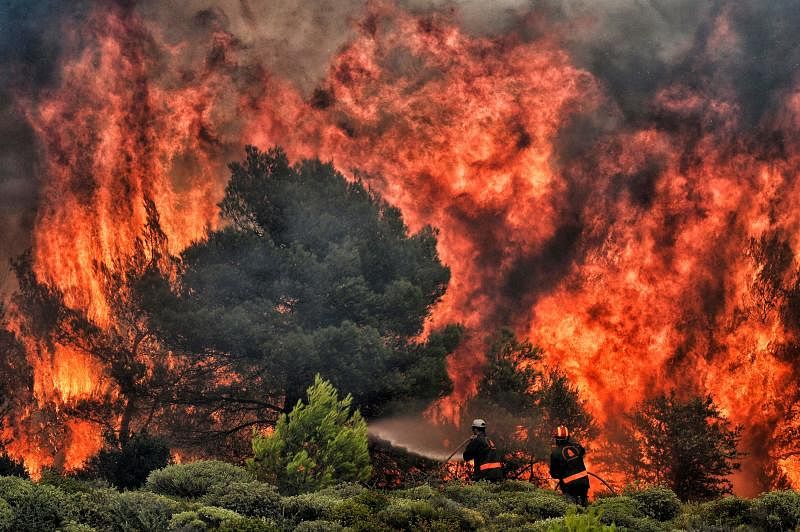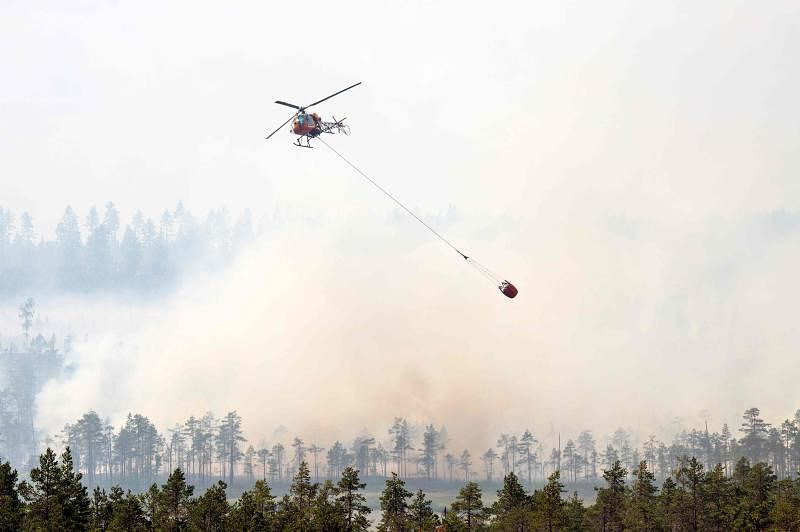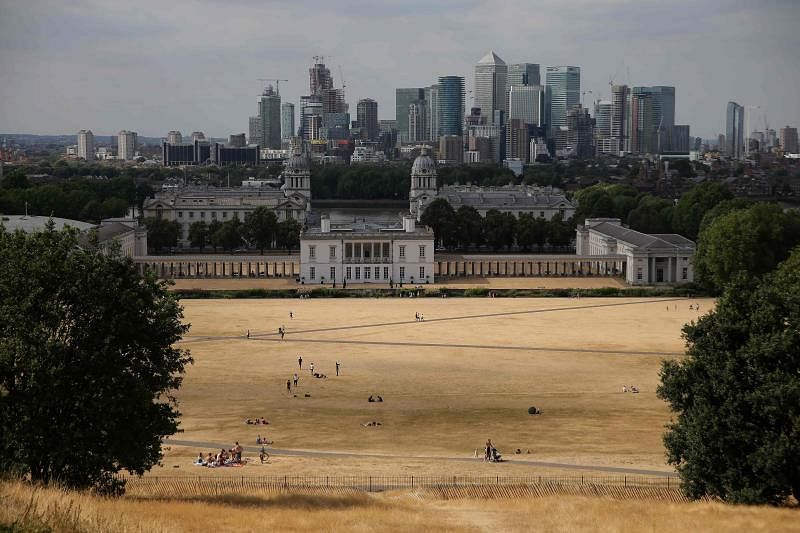Blistering temperatures, particularly in Europe and East Asia, over the past two weeks have killed dozens of people, triggered wildfires and driven up food and electricity prices.
Temperatures have also spiked in parts of the United States, joining large areas of the Northern Hemisphere where temperature heat maps show an angry shade of red.
Heatwaves are a natural occurrence but what has happened over the past two weeks is beyond normal, shattering heat records and, twinned with low rainfall, turned parched farmlands brown in many places.
Climate scientists say extreme heat is strongly correlated to climate change. What is occurring is something they have long predicted - a future of longer and more extreme heatwaves.
Japan, Greece and Sweden have been particularly badly hit of late.
The heatwave started more than two weeks ago in Japan, occurring right after some of the deadliest floods hit the south of the country.
Some areas are still without water as the clean-up and repairs continue under temperatures nearing 40 deg C.
At least 80 people have died and thousands treated in emergency rooms from heat-related illnesses.
High temperatures and lack of rain had primed forests around the Greek capital Athens for fires.
Earlier this week, a wildfire swept through a resort town east of the capital, killing more than 80 people.

In Sweden, dozens of fires swept through large areas of forest, which had become tinder dry because of record heat and dry weather.
A total of 23 fires were still burning, Agence France-Presse reported on Thursday (July 26).

The current heatwave looks set to last a little longer for some places.
In northern Scandinavia, relief from the soaring temperatures might not arrive for at least two weeks.
In Britain, the long-running heatwave there has scorched the countryside.

Temperatures were expected to near, or even exceed, past records on Friday.
WHAT RECORDS HAVE BEEN BROKEN?
In the past 30 days, there have been 2,988 new daily maximum temperatures, 153 new hottest months and 55 new all-time highs worldwide, according to the National Oceanic and Atmospheric Administration's weather records data tool.
In the US alone, there have been 1,494 new daily maximum temperatures, 82 new hottest months and 23 new all-time highs during the same time period, most of which were recorded in Texas, New Mexico and Louisiana.
In Japan, dozens of locations set record highs on Monday, according to the Japan Meteorological Agency, and 241 individual weather stations hit at least 35 deg C.

Temperatures on Monday hit an all-time record of 41.1 deg C in the city of Kumagaya northwest of Tokyo.
In northern Scandinavia above the Arctic Circle, temperatures reached 32 deg C last week.
Sweden has had its hottest July in 260 years, local media reported.
WHAT'S THE TREND?
The world has warmed on average about 1.1 deg C since the late 19th Century.
Climate scientists say warming needs to be curbed if mankind is to avoid catastrophic impacts, such as more powerful storms, extreme heatwaves and drought, and faster destruction of coral reefs.
Under the UN's 2015 Paris Climate Agreement, nearly 200 nations agreed to limit warming to below 2 deg C and aim for a rise of 1.5.
But the world is far from these goals. Emissions reductions that nations pledged as part of the pact put the world on a path to warm at least 3 deg C.
Even limiting global warming to 2 deg C will not prevent destructive and deadly climate impacts as once hoped, dozens of experts concluded in a score of scientific studies released in April this year.
Every year, human activity is adding more greenhouse gas emissions that are trapping heat in the atmosphere.
Carbon dioxide from burning fossil fuels such as coal is the main greenhouse gas.
But emissions also come from cutting down forests and from agriculture, such as methane from rice fields and belching cows and sheep.
Scientists say emissions have to peak in the next few years and then decline quickly.
The signs are not good. Global carbon emissions hit a record high in 2017 after three years of being flat, in part because of higher energy demand, the International Energy Agency said in March this year.
Last year was also the second warmest on record and followed the record-breaking years of 2014, 2015 and 2016.
WHAT ARE THE RISKS
There are many. These include increasing death rates among the elderly, the ill and the very young, especially people living in poorly insulated housing or those unable to afford electricity for air conditioning.
For example, premature deaths from heatwaves in Britain could more than treble to around 7,000 a year by mid-century if the government does not take action, a committee of lawmakers said in a report on Thursday.
The cross-party Environmental Audit Committee called on the British government to develop a strategy to protect the health of the elderly in periods of extreme heat.
In August 2003, a 10-day heatwave across Europe was thought to be the warmest for up to 500 years.
The heatwave led to more than 20,000 deaths across Europe, including 15,000 in France and 2,193 in Britain.
The UK Met Office predicts there is a risk that similarly intense heatwaves will occur every other year by the 2040s, the committee said.
Food production is also at risk. In Japan, high heat and low rainfall have cut summer production of lettuces, cabbages and cucumbers.
In some areas, the price of cabbages has doubled.
Heatwaves and low rainfall also threaten water supplies for farms and cities - even affecting power plants.
The heatwave in parts of North America, Europe and Asia, coupled with a worsening drought in some areas, has caused spikes in the prices of anything from wheat to electricity, Bloomberg reported.
For example, cotton plants are stunted in parched Texan fields, French rivers are too warm to effectively cool nuclear reactors, and the Russian wheat crop is faltering.
IS CLIMATE CHANGE TO BLAME?
Scientists say climate change has greatly increased the likelihood of extremely hot summer days.
In the past, extreme heatwaves have been rare but as the world warms, computer climate models predict they will occur more frequently.
That is also the finding of the UN Intergovernmental Panel on Climate Change (IPCC).
Every five years or so, more than 1,000 scientists produce the IPCC's latest assessment of climate change impacts and causes.
In the latest report in 2014, the IPCC said it is very likely that heatwaves will occur more often and last longer in future.
It also found that mankind has most likely contributed to global changes in the frequency and intensity of daily temperature extremes since the mid-20th century.
In short, the predicted extremes of weather, along with rising sea levels and melting ice caps and glaciers, are already happening and expected to get worse.



